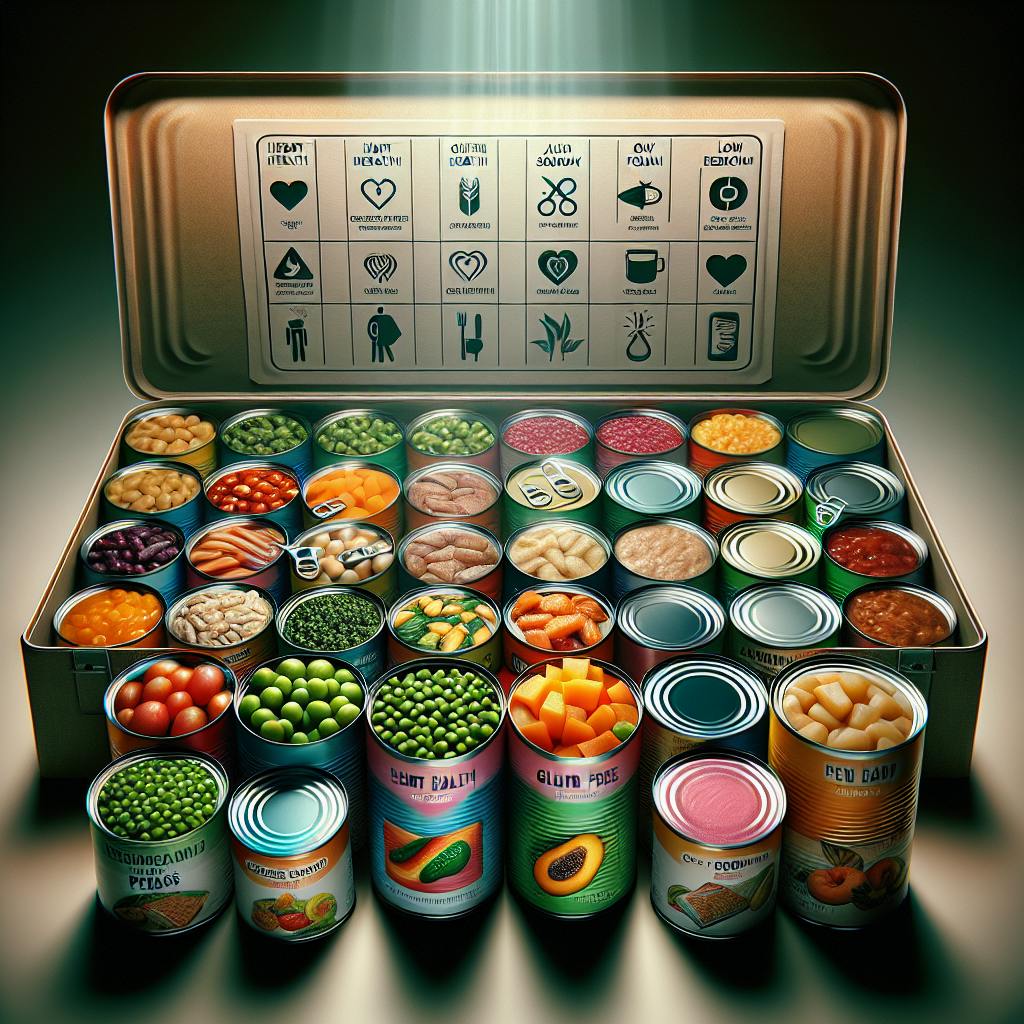Assembling an well-stocked EMS go bag is crucial, yet often overlooked.
This comprehensive checklist will equip you to prepare an EMS bag with all the vital supplies to effectively respond in any medical emergency.
You'll discover the core components like wound care essentials, medications, airway support tools, as well as advanced equipment for diagnostics and monitoring. With this guide, you can optimize your EMS go bag for emergency preparedness.
Introduction - The Essential EMS Go Bag Explained
This section introduces readers to the concept of an EMS go bag, discussing its critical role in emergency response and the value of having a best fully stocked EMT bag.
Defining the EMS Go Bag
An EMS (Emergency Medical Services) go bag, also known as a jump bag, is a backpack or bag filled with medical supplies and tools for emergency response. It allows EMTs, paramedics, and other medical personnel to quickly access life-saving equipment when responding to medical emergencies.
The typical EMS go bag contains items like bandages, gauze, tourniquets, trauma shears, gloves, masks, a stethoscope, blood pressure cuff, penlight, and more. Oxygen tanks or bags may also be included for more advanced care. The goal is to have all the necessary medical gear in one consolidated, portable bag that can be easily transported to emergency scenes.
For preppers and survivalists, having your own personal EMS go bag prepares you to provide first aid and trauma care when professional responders may not be available. A well-stocked EMS bag serves as your own portable emergency room.
Users of the EMS Bag
EMS bags are used by:
- EMTs and paramedics responding to 9-1-1 calls
- Firefighters providing first aid on scenes
- Search and rescue teams deployed to disasters
- Good samaritans rendering roadside assistance
- Nurses and doctors making house calls
- Preppers, survivalists, and homesteaders in rural areas
- Wilderness adventurers and outdoor enthusiasts
Having an EMS go bag allows these users to rapidly deliver urgent medical intervention, helping save lives.
Advantages of a Fully Stocked EMS Go Bag
Maintaining a fully stocked EMS go bag with oxygen and the necessary supplies provides many advantages:
- Quick access to life-saving equipment for fast intervention
- Ability to handle a wide range of traumatic injuries and medical emergencies
- Confidence to provide care without having to second-guess supplies
- Preparedness for disasters and scenarios with delayed emergency response
- Customization to include specialized items per your medical training
Overall, an well-equipped EMS bag serves as your best friend when facing a medical crisis. Just grab it and go!
What should be in an EMS jump bag?
An EMS jump bag, also known as an EMT bag or trauma bag, contains essential medical supplies and tools that first responders need to provide immediate care in emergency situations. Here's a checklist of what every well-stocked EMS bag should contain:
Bandages and Wound Care
- Adhesive bandages of varying sizes
- Gauze rolls
- Sterile dressings
- Antiseptic wipes
- Burn gel/dressings
- Tourniquets
- Hemostatic agents like QuikClot
Airway Management
- Oral airways
- Nasal airways
- Bag valve mask (BVM)
- Suction device
- Oxygen cylinder with regulator
Monitoring and Protection Gear
- Stethoscope
- Blood pressure cuff
- Gloves
- Face masks/shields
- Blanket
Medications
- Pain relievers
- Anti-inflammatory meds
- Benadryl
- EpiPen
Tools and Miscellaneous
- Flashlight with extra batteries
- Shears
- Penlight
- Cold/hot packs
- Glucose monitor
- Emergency contact list
Keeping your EMS jump bag fully stocked ensures you have the vital equipment and supplies on hand to administer prompt, lifesaving care when responding to medical emergencies. Check and refresh your bag's contents regularly.
What is the bag that paramedics carry?
An EMT's bag, also known as a jump bag or ems go bag, contains essential medical supplies and equipment that EMTs and paramedics need to provide emergency medical care.
These bags allow EMTs to quickly grab vital tools when responding to medical emergencies. Key items found in most ems go bags include:
- Bandages and wound care supplies like gauze, tape, and trauma shears
- Medications like epinephrine, aspirin, oxygen, and glucose
- Diagnostic tools like stethoscopes, blood pressure cuffs, and pulse oximeters
- Personal protective equipment like gloves, masks, and eye protection
- Documentation tools like notepads and pens
EMT bags come in different sizes and configurations depending on the provider's needs. For example, a bag used by a wilderness EMT may contain more wound care items and medications than one used by an ambulance EMT.
It's critical for EMTs to continually inspect and restock their ems go bags. An ems go bag that is fully stocked ensures EMTs have the vital tools on hand to provide prompt, lifesaving care whenever and wherever they're called to respond.
What is in an EMT trauma kit?
An EMT trauma kit, also known as an EMS go bag, is essential for emergency medical responders to provide rapid care in critical situations. Here is a checklist of recommended supplies that every trauma kit should contain:
Bandages and Wound Care
- Sterile gauze pads (multiple sizes)
- Rolled gauze
- Adhesive medical tape
- Antiseptic wipes
- Burn gel and dressings
- Eye pads and eye wash
- Triangular bandages
- Elastic wraps
Airway Management
- Pocket mask with one-way valve
- Nasopharyngeal airways (multiple sizes)
- Oropharyngeal airways (multiple sizes)
- Suction device with tubing
- Lubricating jelly
Bleeding Control
- Tourniquets ([secondary_keywords])
- Hemostatic gauze
- Chest seals for open pneumothorax injuries
Monitoring and Protection
- Nitrile gloves (multiple pairs)
- Face masks
- Blanket
- Flashlight
- Shears
- Penlight
Keeping these essential [secondary_keywords] fully stocked in an EMS go bag allows EMTs and paramedics to rapidly assess patients, manage airways and breathing, stop bleeding, and initiate treatment in critical first response situations where every second counts.
What is in a first responder bag?
A first responder bag, also known as an EMS go bag, contains essential medical supplies and tools to provide immediate care in an emergency.
Standard Contents
A well-stocked first responder bag includes:
- Personal Protective Equipment (PPE): Nitrile gloves, N95 masks, face shields, gowns
- Airway Management: Bag valve masks, oropharyngeal airways, nasal trumpets
- Bleeding Control: Gauze, bandages, tourniquets, hemostatic agents
- Medications: EpiPens, nitroglycerin, aspirin
- Diagnostics: Blood pressure cuff, stethoscope, pulse oximeter, glucometer
- Other Supplies: Cold packs, eye wash, biohazard bags
The bag is made from durable 100 denier cordura fabric with multiple interior and exterior pockets to organize gear. It features a handle and shoulder strap for easy transport.
Customizing Your Bag
The exact contents can be customized depending on your local protocols, scope of practice, and typical call volume. Be sure to check expiration dates and replace used items regularly. Having an up-to-date inventory checklist makes re-stocking efficient.
The right EMS go bag allows first responders to bring lifesaving interventions to the patient's location quickly during those critical first few minutes.
sbb-itb-b932644
Core Components of a Fully Stocked EMT Bag
This section outlines key items that should be included in a comprehensive EMT bag to ensure readiness for various medical emergencies.
Bandages and Wound Management
Having a variety of bandages and wound care supplies is critical for effective trauma response. Essential items include:
- Sterile gauze pads and rolls - for controlling bleeding and protecting wounds
- Adhesive bandages - provide barrier protection for minor cuts and abrasions
- Occlusive dressings - seal major wound sites while allowing observation
- Hemostatic agents - help stop bleeding for severe lacerations
- Tape - secures dressings and stabilization of injuries
Stocking a range of bandage materials ensures you can properly treat anything from minor scrapes to major lacerations.
Essential Medications and IV Solutions
Carrying basic medications and IV fluids enables administration of critical care:
- Oral analgesics - treat pain, fever, and inflammation
- Antihistamines - counteract allergic reactions
- Glucose paste/tablets - boosts blood sugar
- Saline/lactated ringers - IV fluid replacement and resuscitation
- Epinephrine auto-injectors - reverses anaphylaxis
- Oxygen - improves breathing during respiratory distress
Having these supplies readily available in your EMS go bag can help stabilize patients until advanced care arrives.
Airway Management and Respiratory Support
Airway and breathing issues are common in emergencies - equip for basic evaluation and management:
- Pocket mask/face shield - protection for rescuer during ventilations
- Oropharyngeal airways - keeps airway open if unconscious
- Pulse oximeter - monitors oxygen saturation levels
- Basic oxygen tank with regulator - provides oxygen support when needed
- Bag valve mask - delivers rescue breaths if not breathing
An EMS jump bag stocked with oxygen and airway gear provides critical respiratory assistance while awaiting ambulance transport.
Advanced Medical Instruments
Having the proper medical instruments is critical for assessing patients and providing treatment during an emergency. An EMS go bag should contain a variety of devices for monitoring vital signs, treating wounds and burns, and supporting musculoskeletal injuries.
Vital Signs Monitoring Devices
Vital signs provide crucial information about a patient's overall condition. Every EMS go bag should include:
- Stethoscope - for listening to heart and lung sounds
- Blood pressure cuff - for measuring blood pressure
- Pulse oximeter - for measuring oxygen saturation levels
- Penlight - for assessing pupil response
Comprehensive Wound and Burn Treatment Supplies
Being prepared to treat lacerations, abrasions, and burns is essential. Supplies to include:
- Sterile dressings and bandages
- Antiseptic cleansers and antibiotic ointments
- Burn sheets and gel pads
- Tweezers and trauma shears
Orthopedic Support Tools
Stabilizing bone and joint injuries helps minimize further damage. Have on hand:
- Rigid splints - to immobilize limbs
- Collapsible backboard - for spinal injuries
- Triangle bandages and elastic wraps - to create slings and support strains
Having advanced diagnostic devices and a full range of treatment supplies will enable EMTs to handle a wide variety of traumatic injuries in the field. Regularly inspecting and restocking an EMS go bag ensures readiness to respond effectively during emergencies.
Diagnostic Tools and Testing Kits
Diagnostic tools and testing kits are essential components of any well-stocked EMS go bag. Having the ability to evaluate a patient's condition in the field can greatly improve the quality of care provided.
Glucose Monitoring Essentials
Given the prevalence of diabetes, carrying a glucometer and testing strips is crucial. This allows EMTs to measure blood glucose levels and treat hypoglycemic or hyperglycemic emergencies appropriately with oral glucose or insulin. Lancing devices and sterilization materials should also be packed.
Specimen Collection for Accurate Diagnosis
- Sterile urine collection cups
- Blood collection tubes with transfer pipettes
- Sterile swabs for wound cultures or rapid strep tests
- Microscope slides and transport media for field microscopy
Proper specimen collection and transport ensures samples remain uncontaminated before lab testing, leading to faster and more accurate diagnoses.
Comprehensive Diagnostic Set
- Blood pressure cuff
- Stethoscope
- Penlight
- Reflex hammer
- Thermometer
Having these basic diagnostic tools on hand facilitates rapid patient assessments, monitoring of vital signs, and neurological evaluations on scene. They provide invaluable clinical information to inform treatment decisions.
Support Tools and Preparedness Equipment
Covering the additional tools and equipment that support medical interventions and enhance overall emergency preparedness.
Illumination and Visibility Tools
Having proper illumination and visibility during an emergency response can greatly improve outcomes. An ems go bag should contain:
- A high-powered flashlight with extra batteries. Look for >1000 lumens output.
- Headlamp for hands-free illumination.
- Glow sticks - useful for marking locations or hazards.
- Reflective gear - vest, bands, etc. to improve visibility.
Multipurpose Tools and Protective Gear
In addition to medical supplies, some general purpose tools can serve many functions:
- Multi-tool pliers with knife, screwdrivers, bottle opener. Helpful for minor repairs, opening containers.
- Work gloves - protect hands from sharp debris during rescue operations.
- Protective eye wear - shield eyes from dust, fluids.
- N95 masks - reduce inhalation of hazardous particles.
- Biohazard disposal bags - properly contain contaminated materials.
Survival Kit Essentials
Being equipped for extended emergencies ensures an EMS jump bag is ready for any situation:
- Water pouches - stay hydrated.
- High calorie food bars - maintain energy levels.
- Emergency blanket and hand warmers - prevent hypothermia.
- Duct tape - temporary repairs and securing bandages/dressings.
- Fire starter kit - critical for wilderness survival.
Having these additional tools and backup items enhances an EMT bag, preparing for diverse emergency response needs.
Conclusion - Optimizing Your EMS Go Bag
Optimizing your EMS go bag is critical for emergency preparedness. This article has provided a comprehensive checklist of recommended supplies to include, with a focus on medical essentials, survival tools, and communication devices.
As a final thought, here are some key considerations when assembling and maintaining your EMS bag:
Final Considerations for Your EMS Bag
- Conduct regular inventory checks every 3-6 months to ensure none of the items are expired, damaged, or missing. Replace as needed.
- Restock medical supplies like bandages, ointments, and medications to ensure you have adequate quantities.
- Check battery levels on devices and replace as required. Consider packing extra batteries.
- Ensure any foods, glow sticks, flares, or other items have not expired.
- Wipe down and disinfect gear regularly.
- Inspect bag for rips, broken zippers, or other damage. Repair or replace bag if issues are found.
- Practice using gear like tourniquets, emergency blankets, radio, etc so you can operate them effectively when needed.
Keeping your EMS bag maintained, fully-stocked, and accessible can be the difference between life and death in an emergency. Following this checklist and the tips above will help ensure you and your loved ones stay safe and prepared.


